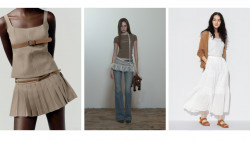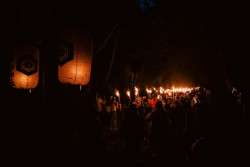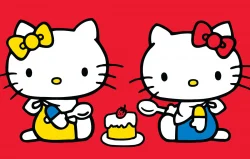
January 6, 2011
January 6, 2011
Originally published on metropolis.co.jp on January 2011 Necrolog There were a few noticeable omissions in your roundup of notable Japanese people who died in 2010 (“In Memoriam,” The Last Word, Dec 24) in particular, three Americans who had a tangential, yet interesting, connection to Japan. William Hohri (died in November at age 83), the son […]
By Metropolis
Originally published on metropolis.co.jp on January 2011
Necrolog

Photo by Catherine Olszowy
There were a few noticeable omissions in your roundup of notable Japanese people who died in 2010 (“In Memoriam,” The Last Word, Dec 24) in particular, three Americans who had a tangential, yet interesting, connection to Japan. William Hohri (died in November at age 83), the son of Japanese immigrants, became a lawyer who was instrumental in winning compensation for Japanese-Americans who had been interned during World War II. Allen Dale June (died in September at 91) was one of the last of the so-called “Windtalkers”—Navajo Indians who developed a code based on their native language for use by the US military against the Japanese. Finally, sculptor Louise Bourgeois (died May aged 98) created one of the best known public artworks in Tokyo—the statue of a spider, called Maman, that sits at the base of the Mori Tower in Roppongi Hills.—Sock Puppet, Yokohama
I would have also included the nissei designer S. Neil Fujita, who died in October at age 89. According to The New York Times, he was born in Hawaii to Japanese immigrants—his father worked as a blacksmith on a sugar plantation. Fujita went on to become a renowned graphic designer “who used avant-garde painting and photography to create some of the most striking album covers of the 1950s,” as well as seminal book jacket designs for In Cold Blood and The Godfather.—Anonymous
Gender trouble
I pick up an issue of your magazine whenever I see one and usually read it online. I can’t remember once seeing a handsome or “sexy” Japanese man on your cover. Maybe I’ve missed all of these issues? I do remember reading a story on a talented director several months ago. You have the “swimsuit issue” and plenty of stories on Japanese female models and actresses, but what about all of the Japanese men out there? Yes, they do exist, and these days you see many Western women, such as myself, who are either married to or dating a Japanese man. Japanese men have been stereotyped negatively for many years by Westerners, while the women are praised for their beauty and modesty. Times have changed, and as a magazine owned by foreigners, I would think that your staff would be more aware of current trends and gender issues, as well as equal representation of the sexes in your publication.
Is it that you have only men on staff who want to interview and photograph beautiful women? Or are your readers mostly men, so you feel the need to cater to them? Don’t feed the stereotypes, it makes your publication look like one itself.—Anne Ochampaugh
Waxing Lyrical
Regarding “DJing’s Darkest Hour” (Clubbing, Dec 10): The Technics 1200 absolutely DID shape the music of today. If it was not for decent direct-drive turntables (of which the Technics 1200 is the ultimate example), dance music would not have gone in the same direction. The Technics allowed DJs to develop beat matching, and dance music standardized as a result; the standard 16-bar sparse intro only started to creep in to allow easy matching in the middle of a set. The fixed BPM is also a direct result of mixing requirements. If it weren’t for the Technics, things would sound a lot different.—DuraAce*
Pretty sad when wannabes go out to buy these instead of spending their money actually learning to play a musical instrument.—hoserfella*
*via Japan Today
Metropolis wants to hear from you. To send your comments, . Note that letters may be edited for length and clarity.







